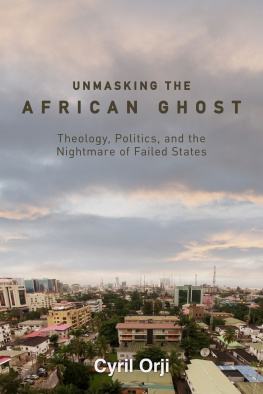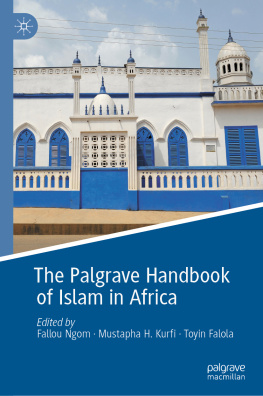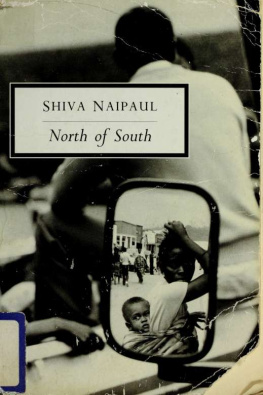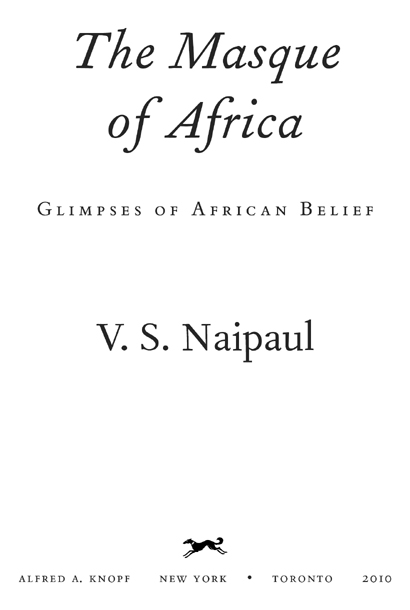ALSO BY V. S. NAIPAUL
Nonfiction
A Writers People
Literary Occasions
The Writer and the World
Between Father and Son: Family Letters
Beyond Belief: Islamic Excursions Among the Converted Peoples
India: A Million Mutinies Now
A Turn in the South
Finding the Center
Among the Believers
The Return of Eva Pern with The Killings in Trinidad
India: A Wounded Civilization
The Overcrowded Barracoon
The Loss of El Dorado
An Area of Darkness
The Middle Passage
Fiction
Magic Seeds
Half a Life
A Way in the World
The Enigma of Arrival
A Bend in the River
Guerrillas
In a Free State
A Flag on the Island
The Mimic Men
Mr. Stone and the Knights Companion
A House for Mr. Biswas
Miguel Street
The Suffrage of Elvira
The Mystic Masseur
Published in an omnibus edition entitled Three Novels.
Published in an omnibus edition entitled The Night Watchmans Occurrence Book.
THIS IS A BORZOI BOOK
PUBLISHED BY ALFRED A. KNOPF
AND ALFRED A. KNOPF CANADA
Copyright 2010 by V. S. Naipaul
All rights reserved. Published in the United States by Alfred A. Knopf, a division of Random House, Inc., New York, and in Canada by Alfred A. Knopf Canada, a division of Random House of Canada Limited, Toronto.
www.aaknopf.com www.randomhouse.ca
Knopf, Borzoi Books, and the colophon are registered trademarks of Random House, Inc.
Knopf Canada and colophon are registered trademarks.
Originally published in Great Britain by Picador, an imprint of Pan Macmillan Ltd., London.
Library of Congress Cataloging-in-Publication Data
Naipaul, V. S. (Vidiadhar Surajprasad), [date]
The masque of Africa : glimpses of African belief / V. S. Naipaul1st ed.
p. cm.
1. AfricaReligion. 2. AfricaDescription and travel. I. Title.
BL 2400. N 34 2010
200.9609051dc22 2010001256
Library and Archives Canada Cataloguing in Publication
Naipaul, V. S. (Vidiadhar Surajprasad), 1932
The masque of Africa : glimpses of African belief / V. S. Naipaul.
eISBN: 978-0-307-59449-5
1. Africa-Religion. 2. Africa-Description and travel. I. Title.
BL 2400. N 343 2010 200.9609051 C2010-903069-9
v3.1
To the A team
N.S., G.C.G., L.F. de R., Ev. de R.,
T.T., P.E., D.P.J.,
and for Andrew Wylie
Contents
CHAPTER 1
The Tomb at Kasubi
I SPENT eight to nine months in East Africa in 1966. A month in Tanzania; six weeks or so in the Kenya Highlands; the rest of the time in Uganda. Some years later I even used a version of Uganda in a piece of fiction; you can do that only when you feel you have a fair idea of a place, or an idea sufficient for your needs. Forty-two years after that first visit I went back to Uganda. I was hoping to get started there on this book about the nature of African belief, and I thought it would be better to ease myself into my subject in a country I knew or half knew. But I found the place eluding me.
I had gone to Uganda in 1966 to be a writer in residence at Makerere University in Kampala, the capital. I lived in a little grey bungalow on the campus, which was spacious and open and well-tended, with asphalted roads with kerbstones, and watchmen at the barred entrance. My allowance (provided by an American foundation) was enough to give me a driver and a cook. My duties werent too well defined, and I was living more or less privately, absorbed in a book I had brought with me, working hard on it every day, and paying less attention to Africa and the students at Makerere than I should have done. When I wanted some relief from the book and the campus, I would drive the fifteen or so miles to Entebbe, where the airport was and where, on the edge of Lake Victoria, which was very grand, the largest lake in Africa, there was also (as there was in other British colonial towns) a Botanical Garden, pleasant to walk in. Sometimes (a reminder of the wildness by which we were surrounded, but from which we were protected) the ground of the Garden was flooded in parts by water from the Lake seeping through.
The drive from Kampala to Entebbe was a drive through country; that was part of its restfulness in 1966. It was different now. You could see from the air, as the plane landed, how Entebbe itself had grown, with more than a scattering of villages or settlements far and wide on the damp green ground below the heavy grey clouds of the rainy season; and you understood that what was once bush in an unimportant area of a small colony had become valuable building land. The shiny new corrugated-iron roofs gave you the feeling that in spite of the bad recent past, forty years as bad as anything in Africamurderous tyranny followed by war and little warsthere might be a money frenzy down there now.
The drive to the capital was no longer a drive through country. Once you got past the old administrative and residential buildings of colonial Entebbe, still somehow surviving (red corrugated-iron roofs and white-painted bargeboards still in good order), you found yourself in an improvised semi-urban development, flimsy-looking, where many of the buildings that had been put up (groceries, garages, flats) seemed only waiting to be pulled down, and in the meantime were bright, and repetitive, with painted walls advertising mobile phones.
It was like that all the way to the capital. There was no view at some stage of the city and the green hills for which Kampala used to be famous. All those hills were now built over; and many of the spaces between the hills, the dips, were seemingly floored over with the old corrugated iron of poor dwellings. But with all these dwellings there had come money and cars and, for people who didnt have the money, the boda-bodas, the bicycles and motorbikes that for a small sum offered you a fast pillion-ride through the stalled traffic, a pillion-ride which in colonial days might have been illegal. The roads couldnt deal with the traffic; even in this rainy season the roads were dusty, scuffed down beyond the asphalt to the fertile red earth of Uganda. I couldnt recognise this Kampala, and even at this early stage it seemed to me that I was in a place where a calamity had occurred.
Later I got the figures for population. They told the story. In 1966 there were about five million people in Uganda. Nowin spite of the rule between 1971 and 1979 of Idi Amin (who was said to have killed 150,000) and the comparable rule between 1981 and 1985 of the feral Milton Obote, who liked his hair to slope up high from the parting, in a version of the style known here as the English style; in spite of those two, and all the subsequent little wars, still going on after forty years (a million and a half people said to be displaced in the north); and in spite of the AIDS epidemicthere were between thirty and thirty-four million people in Uganda. As though Nature, going against logic, wished to outdo itself, to make up for the blood Uganda had lost and didnt want the little country and its great suffering to fade away.
There was a mosque or church at the top of every hill, and major ecclesiastical buildings everywhere else. All the Christian denominations were represented. And in the over-built-up poorer areas there were simpler born-again Christian structures, sometimes fancifully named, with signboards: as though religion here was like a business that met a desperate consumer need at all levels. There were competing mosques of various sorts, Sunni, Shia, Ismaili; the Ismaili community, considered heretical by some, was powerful in East Africa. There was even a mosque and a school of the Ahmadiya sect, which honoured a nineteenth-century Indian-born prophet of Islam and was not accepted by all Muslims. To add to the mix, Brother Leader Ghaddafi of Libya was due in a few days, with his stylish clothes and dark glasses, and with his famous female bodyguard (in addition to his two hundred security men), to open a very big Libyan mosque on a prominent hill site in old Kampala. In the commercial area of the town there were two newish Indian stone temples near the Indian places of business. The Indians had been invited back after their expulsion by Amin; and they had come back to an ambiguous welcome: a local paper was wondering whether they had been compensated twice, and asking its readers to comment. So the red flags flew on the stone temples, to say that the temples were in use.














